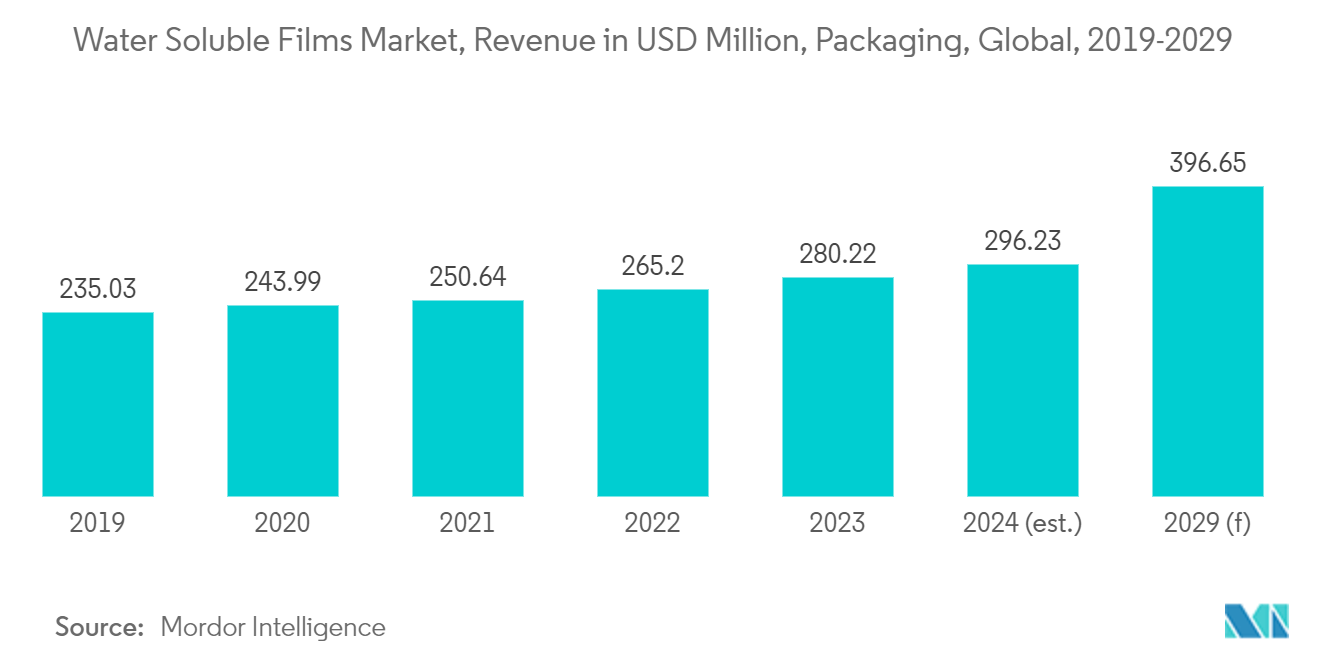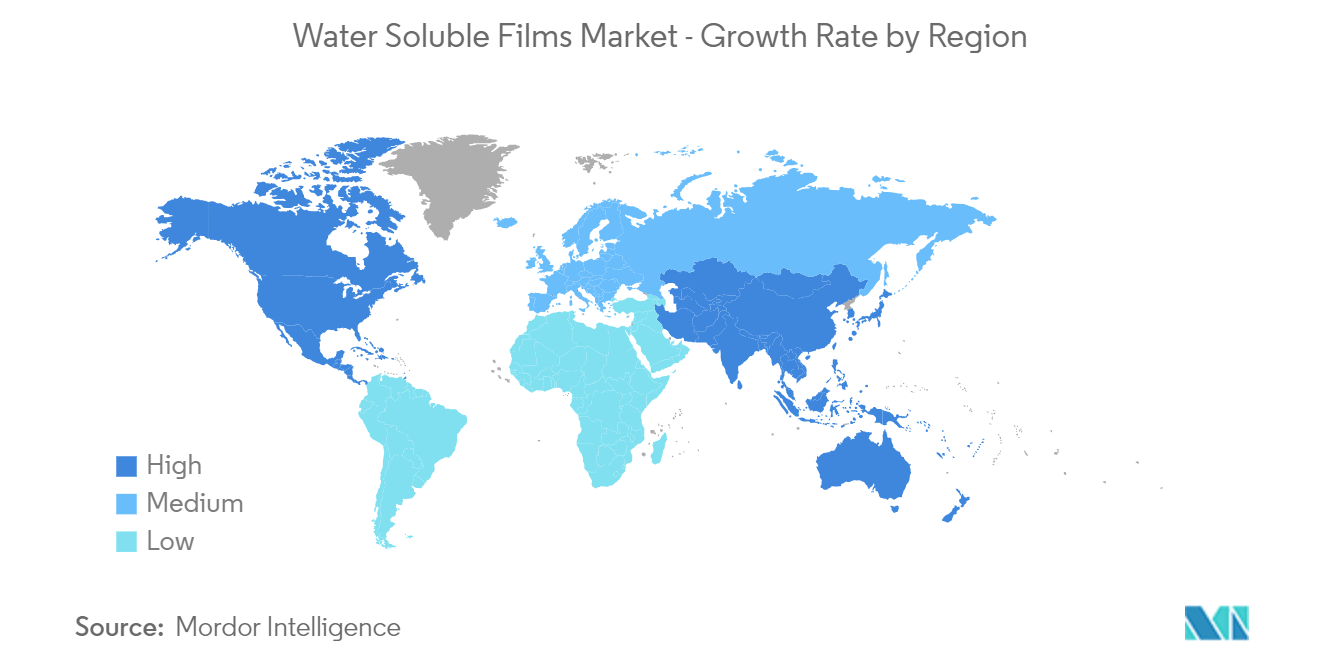Market Trends of Water Soluble Films Industry
Packaging Industry to Dominate the Market
- Packaging is the major end-user industry for water-soluble films, as the film offers excellent sealing and deep drawing properties while being completely soluble even in cold water. They are considered biodegradable, non-toxic, and non-inhibitory.
- Water-soluble films are used for packing laundry detergents, dish-washing tablets, cleaning products, swimming pool products, agrochemicals, dyes, fertilizers, cement, food additives, fish bait, seeds, soiled clothes, toilet blocks, powder, liquid detergents, etc.
- Water-soluble films have good air barriers and offer effective resistance to oil. These films help preserve food for a longer time and keep the food fresh. Additionally, water-soluble films deliver savory flavors to meat products during cooking.
- The usage of water-soluble films in the packaging of dyes, cement additives, and enzymes is increasing to minimize pollution and provide a consistent dose during the product’s manufacturing process. The mixing operations have become simple using water-soluble films, and the additive measures are more exact.
- Moreover, water-soluble films encapsulate the entire terminal tackle with dry feed such as crushed boilies and pellets. These water-soluble bags are trendy owing to their strength, high melt rate, and ability to ‘lick’ and stick’ the corners to create aerodynamic water-soluble film parcels for casting. When water-soluble film bags are used to package baits and hooks for deep-water fishing, they prevent interference by fishes in shallow water areas and attract larger fishes for deep-water fishing.
- Another major application of water-soluble films is liquid detergent packaging. This application uses water-soluble film packaging to deliver unit dosages of liquid detergent products. Active concentrate of liquid detergent ingredients is packed in water-soluble films.
- The market is driven by the increased usage of environmentally friendly materials in packaging. Eco-friendly packaging is recyclable, biodegradable, reused, and non-toxic, with a low environmental impact.
- In January 2024, Arrow Greentech Limited (AGTL) announced that it received a grant for a patent titled ‘Improved Water-Soluble Film and Method of Making the Same’ under Patent No. 480889 from the Indian Patent Office. This improved water-soluble film is used in the packaging industry, as it is safe for the environment. Also, these quality films can be used for packaging different active ingredients, such as pharmaceuticals and aggressive agrochemicals, in powder and liquid formats of higher volumes.
- Thus, with the increasing demand for customized products and minimizing chemical wastage to improve environmental health, the demand for water-soluble films in packaging is growing at a rapid rate.

North America to Dominate the Market
- The United States is the largest market for water-soluble films and is expected to account for around 78% of the share in 2024.
- Water soluble films are an ideal preference for packaging applications in the pharmaceutical industry due to their high solvent resistance and gas barrier properties. The changing trends in consumer behavior and the manufacturer’s easier convenience benefitted the industries to grow faster in the country, further benefitting the water-soluble films market.
- Some companies catering to the water-soluble films market in the United States are Sekisui Specialty Chemicals America, Kuraray Co. Ltd, Medanos Claros HK Limited, and Aicello Corporation.
- The Canadian water-soluble films market may also see a significant growth rate during the forecast period due to increasing demand from detergent packaging and pharmaceutical industries. The surge in consumer demand for user-friendliness and convenience plays a pivotal role in the market for water-soluble detergent pods.
- Water-soluble bags are also hitting the Canadian end-user sectors as the country fights to replace traditional plastics, thus creating a demand for water-soluble films. As of October 2020, the Canadian government issued an inclusive plan to completely phase out single-use plastics by 2030.
- According to the Canadian Institute for Health Information, Canada’s total health expenditure was around USD 344 billion in 2023, an increase of 2.3%. The total health spending was around 12.1% of Canada’s gross domestic product (GDP) in 2023. The Canadian government is expected to spend USD 200 billion on healthcare over the next ten years. So, given the crucial role of water-soluble laundry bags in controlling the spread of contamination from soiled clothes and bedsheets in hospitals, it is expected that this development may stir an escalation in the demand for water-soluble films in the country.
- Mexico holds a substantial laundry care market, with the expanding hospitality sector supporting the consumption of detergents in hotels. Brands like Ariel, ACE, and Persil are some of the prominent laundry detergent pods used in the country’s homes and hospitality industry.
- The market studied is expected to find positive prospects in the textile industry. According to the International Trade Administration (ITA), textile production accounted for 3% of Mexico’s manufacturing GDP in 2022. The country is a major textile producer with an annual export of textiles worth around USD 7 billion.
- Such trends are likely to impact the market’s growth in North America over the forecast period.


